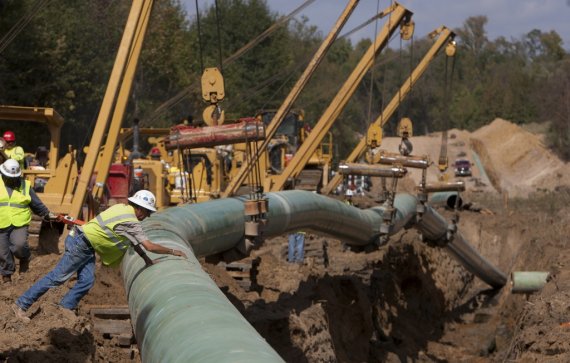Last year, researchers at Duke University published a controversial study of groundwater in Pennsylvania showing that water wells in close proximity to Marcellus Shale gas wells had higher concentrations of natural gas in the water than more-distant water wells in the same aquifer. (See my prior post here.) The same authors have now published a new study, “Geochemical evidence for possible natural migration of Marcellus Formation brine to shallow aquifers in Pennsylvania,” in the Proceedings of the National Academy of Sciences. The study concludes that the data “suggests conductive pathways and specific geostructural and/or hydrodynamic regimes in northeastern Pennsylvania that are at increased risk for contaminaion of shallow drinking water resources, particularly by fugitive gases, because of natural hydraulic connections to deeper formations.” The authors suggest this as a reason that gas can be found more abundantly in water wells near recently completed Marcellus wells.
The study analyzed chemical content from 426 samples of groundwater and compared the salts present in those waters to the salts contained in brine water from the Marcellus formation. For some wells, they found that the salts in the groundwater had the same chemical composition as the salts in the Marcellus formation, indicating, they say, that the groundwater must be contaminated with saline water that migrated over time from the Marcellus. The authors suggest that, because there is no correlation between the salinity of these water wells and proximity to Marcellus gas wells, “it is unlikely that hydraulic fracturing for shale gas caused this salinization and that it is instead a naturally occurring phenomenon that occurs over longer timescales.” They conclude that, because of the “longer timescales” for migration of salt water into the aquifers, “the possibility of drilling and hydraulic fracturing causing rapid flow of brine to shallow groundwater in lower hydrodynamic pressure zones is unlikely but still unknown. By contrast, the time scale for fugitive gas contamination of shallow aquifers can be decoupled from natural brine movement specifically when gas concentrations exceed solubility … (i.e., bubbles).” The authors conclude: “the coincidence of elevated salinity in shallow groundwater with a geochemical signature similar to produced water from the Marcellus Formation suggests that these areas could be at greater risk of contamination from shale gas development because of a preexisting network of cross-formational pathways that has enhanced hydraulic connectivity to deeper geological formations.”
The authors cite two studies that they say document cross-formational pathways allowing deeper saline water to migrate into shallower aquifers in western Texas: Metha S, Fryare AE, Banner JL (2000 Controls on the regional-scale salinization of the Ogallala aquifer, Southern High Plains, Texas, USA. Appl Geochem 15:849-864; and Hogan JF, et al. (2007) Geologic origins of salinization in a semi-arid river: The role of sedimentary basin brines. Geology 35:1063-1066.
 Oil and Gas Lawyer Blog
Oil and Gas Lawyer Blog


